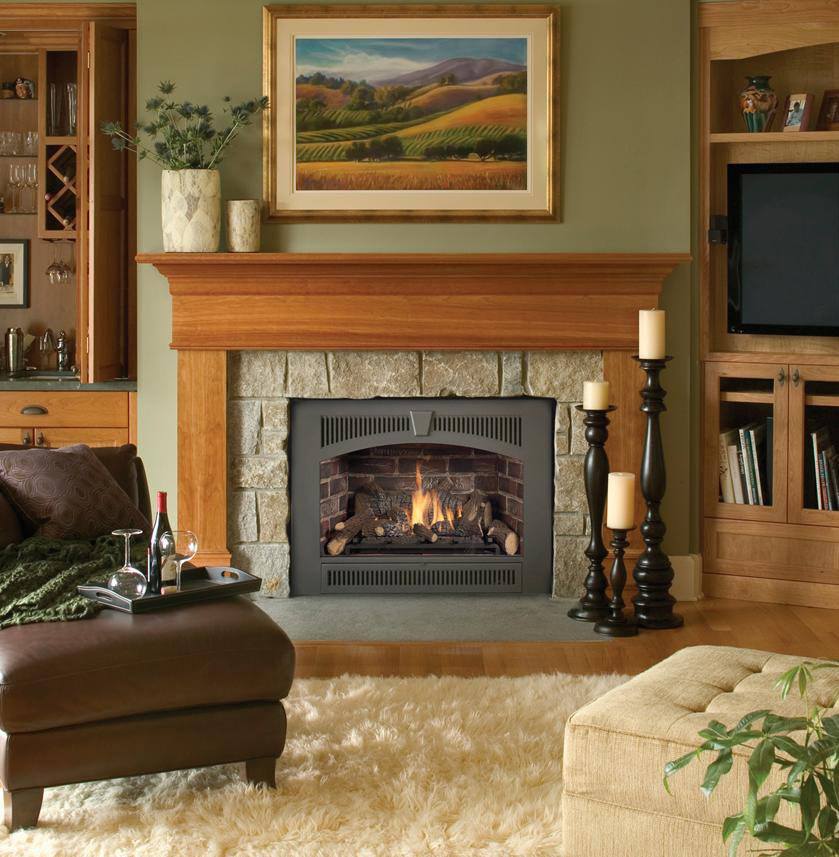On cold winter nights in the Bay Area, wood smoke is the second-hand smoke of topmost concern, filling neighborhoods with fine particle pollution that is as harmful to your health as cigarette smoke.
To address this health hazard, the Bay Area Air District has enacted The Wood Smoke Reduction Incentive Program and Winter Spare the Air Alerts. These programs are designed to help combat and bring awareness to harmful air quality levels in the Bay Area.
If you are a Bay Area resident using a traditional wood-burning fireplace or woodstove, you may have already been affected by ‘no-burn days’ during the Winter Spare the Air Alerts. During these alerts, it is illegal to burn wood, manufactured logs, pellets, or any other solid fuels in your fireplace or woodstove.
In case the trouble of ‘no burn days’ isn’t enough, we’ve rounded-up reasons why you should ‘spare the air’ by converting your traditional fireplace into a gas insert or fireplace.
Traditional Fireplaces are Inefficient Sources of Heat:
While the ‘warmth’ of a traditional fireplace is its pivotal selling point, it’s more myth than fact. Traditional fireplaces may be great for giving out that warm, inviting feel but they’re actually terrible sources of heat for your home.
A chimney can steal as much as 90 percent of the heat created. Warm air can be pulled up the chimney, resulting in heat lost within the room your fireplace is located in, as well as additional rooms. As a result, only 15% of the wood in your fireplace’s energy is actually converted into heat. In comparison, a gas insert can get up to 80% heat efficiency and properly heat your home.
When there is no fire in the fireplace it will actually be negative efficient – sucking the warm air from your house up your chimney.
Traditional Fireplaces Harm Our Health:
Wood smoke pollution includes carbon dioxide (CO2), methane (CH4), and particle pollution (otherwise known as black carbon).
Particle pollution is of great concern during the wintertime in the Bay Area, when seasonal wood-burning makes a substantial contribution. This particulate matter (PM) is made up of microscopically small solid particles which get suspended in the air. These small particles can cause respiratory issues like lung irritation and inflammation and aggravate the severity of chronic lung diseases.
According to the Bay Area Spare the Air Organization, wood burning accounts for about one-third of the airborne particulate matter in the winter months. This harmful matter is being generated from the estimated 1.4 million fireplaces and wood stoves in the Bay Area. (1)
Gas fireplace inserts do not create particulate matter and are exempt from burn ban days.
Traditional Fireplaces Are Potentially Less Safe:
The majority of safety problems attributed to traditional fireplaces are due to poor chimney maintenance. A poorly maintained chimney can result in serious problems such as carbon monoxide poisoning and chimney fires.
Carbon monoxide is created during the combustion of wood in your traditional fireplace. If your chimney is not properly exhausting the fumes, you could experience unsafe levels of carbon monoxide in your home as a result.
As wood smoke travels up your chimney, it condenses like steam and creates a substance called creosote. Creosote is a highly flammable substance that can build up within your chimney and potentially cause chimney fires. Chimney fires are extremely dangerous and cause about 25,000 fires in the US every year. Fire code standards mandate an annual inspection by a professional every year to prevent the build-up of creosote in your chimney.
Gas Fireplaces and Fireplace Inserts Are Far Easier for Maintenance:
Starting a cozy night in with a fire from a gas fireplace insert is as easy as flipping a switch or pressing a button on a remote, grabbing a friend, and opening a bottle of wine.
Compared to a traditional fireplace, there is no wood to procure or chop and no ashes to clean out. Because the heat for your room is no longer being created from the combustion of wood, no ash or dangerous creosote is produced.
A typical maintenance schedule for a gas fireplace insert requires cleaning the gas pilots and burners, cleaning the glass and exterior of the fireplace, checking to ensure the gas pilot safety system is working properly, and ensuring the fan, chimney draw and combustion vents are working. We encourage you to follow the manufacturer maintenance and care instructions for your fireplace insert.
As far as annual maintenance goes, a gas fireplace insert only requires an annual low-cost maintenance inspection- Which the experts at Creative Energy are always happy to help with. We encourage gas insert owners to schedule their inspection before the start of winter.
Not only does a gas fireplace insert provide the lovely fireplace ambiance that so many crave, but it also packs a one-two punch of incorporating many of the desirable features that wood-burning fireplaces lack: They are efficient sources of heat, less harmful on your health, safer, and they result in minimal clean-up and maintenance.
If you’re ready to make the switch to a gas fireplace insert or have questions about the process, contact our team at Creative Energy for a free in-home consultation today.

